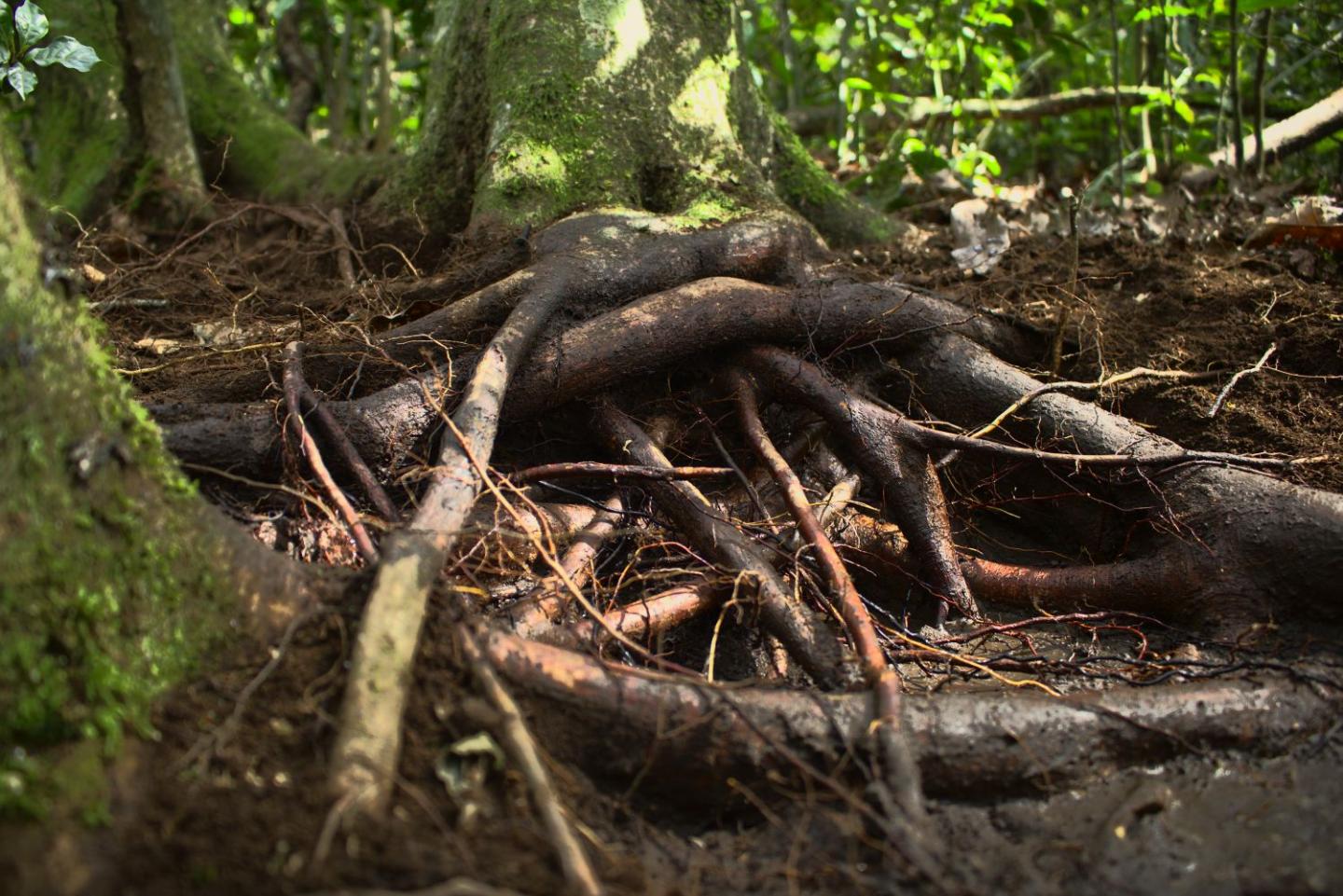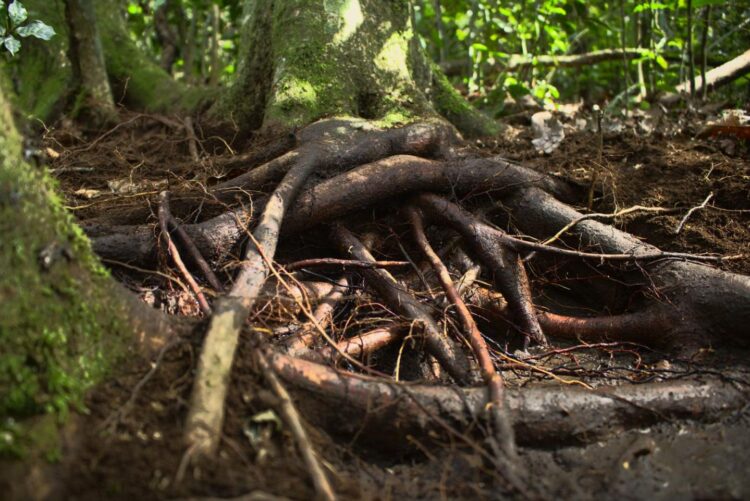
Credit: Alejandra Vovides
The fact that the roots of trees of the same or even different species grow together and thus connect to form networks is not new. However, the exact significance of this for forest ecology is still largely unknown. The research results of the scientists from TU Dresden, University of Glasgow, Mendel University Brno and the Ecología in Veracruz, Mexico provide significant new insights: The studies in La Mancha Lagoon in the Gulf of Mexico confirmed the hypothesis that root networks evolved as a survival strategy. Through the interconnected roots, the mangroves exchange water and dissolved nutrients during times of shortage. The trees that have better access to water can help supply neighboring trees in this way. Research shows that mangroves connected by root networks are larger on average. In addition, the number of networks increased with hightended soil salinity, an indicator of drought stress. This shows that the connections the trees make with each other via the root system, for which they have to expend energy, quite evidently offer advantages for the group.
The size of the group – i. e., the number of mangroves connected in the root networks – is far from being irrelevant. Research suggests that there is an optimal group size. Yet, the greater the stress to which the trees are exposed, the smaller the group. Which underlying mechanisms regulate these processes, or how exactly the trees interact with each other and redistribute resources, are questions that require further research.
###
Research project: https:/
Media Contact
Prof. Uta Berger
[email protected]
Original Source
https:/





